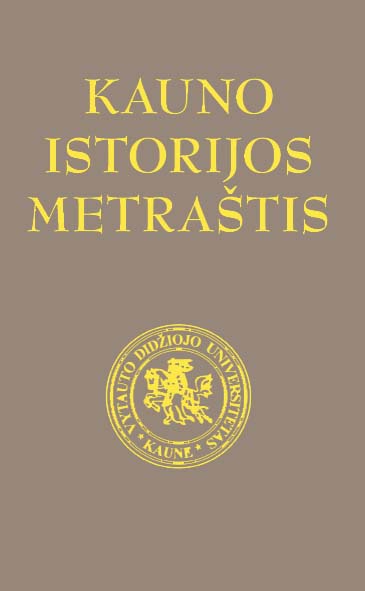„Minervos“ fabriko ištakos ir raida XIX a. septintajame dešimtmetyje: nuosavybės formos, savininkai, dalininkai, valdytojai
The Inception and Development of the Factory Minerva in the 1860s: Forms of Ownership, Owners, Shareholders and Managers
Author(s): Asta Miltenytė, Arminas ŠtuopysSubject(s): History, 19th Century
Published by: Vytauto Didžiojo Universitetas
Keywords: Kaunas; T. Heidukevičius and Company; Minerva factory; M. P. Rekošas;
Summary/Abstract: The article discusses the development of Minerva, a metalwork and machinery factory, in the initial period of its operation in the 1860s, which has not been researched in the historiography. We divide the period into several phases according to the ownership, management and legal-organizational forms of the company. Tomas Heidukevičius (Tomasz Hejdukiewicz), who stood out for his organizational skills and energy, founded the company in the autumn of 1862. At that time, the factory’s products for cemeteries contained the owner’s initials and a reference to the city of Kaunas. In January 1863, four associates pooled a capital of 32,000 silver rubles and founded the company, T. Heidukevičius & Co. It signifies the second phase of the company. The first owner remained the manager of the factory and one of the partners. The name of the factory and the branding of its products stayed unchanged. It was likely that the other three associates, who did not live in Kaunas, were not involved in the management and production processes of the company. In the spring of 1864, T. Heidukevičius dies, and in this third phase of the company (from the summer of 1864), J. Griškevičius, the son-in-law of one of the associates, becomes the manager of the company. He is called a director but not a shareholder. The products for cemeteries no longer bear the name of the first owner, but the name of the city remains. Later, the company and the factory were renamed ‘Minerva’, bearing no other names. In the spring of 1865, another member of the company, V. Rakoveckis, dies. The press no longer mentions the second director, and announces about the auction of the company, the results of which have been unknown. The fourth, unsuccessful and little-researched phase of the factory’s development begins. During this phase, M. P. Rekošas signs as the owner of Minerva and as a merchant of the Second Guild. In 1868, the company receives the first orders from the state, but in April 1869, the factory catches fire. At the end of 1869, or in May 1870, with the death of the shareholder I. Bakka, the company draws its last breath, and Minerva becomes the sole property of the Rekošas family. After these events, products intended for cemeteries included the name ‘Minerva’, the geographical indication and the Rekošas surname. Therefore, the name ‘Minerva’ and the activities of the factory cannot be attributed exclusively to Rekošas. He was not the founder of the factory and did not have a major influence on its activities at the inception. It was a chain of tragic events that led to the demise of the company and to the transfer of the factory into the hands of a single owner, Rekošas and his family.
Journal: Kauno istorijos metraštis
- Issue Year: 2023
- Issue No: 21
- Page Range: 133-155
- Page Count: 23
- Language: Lithuanian

